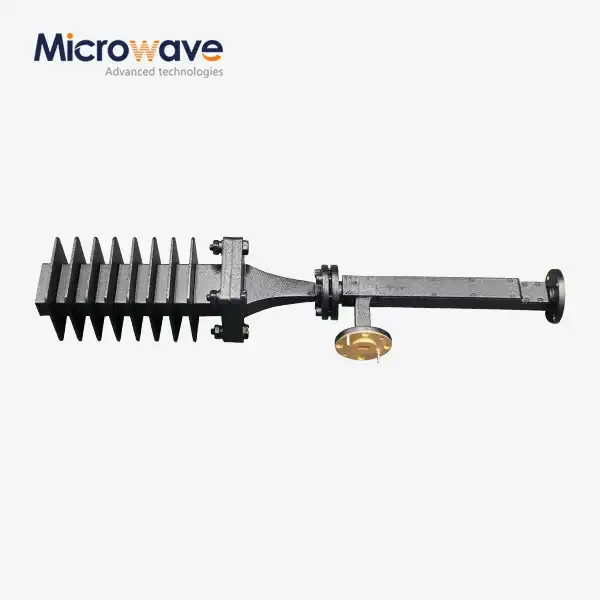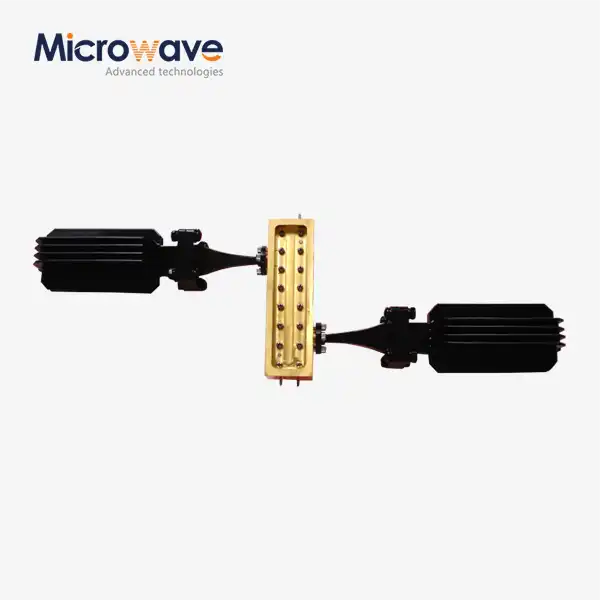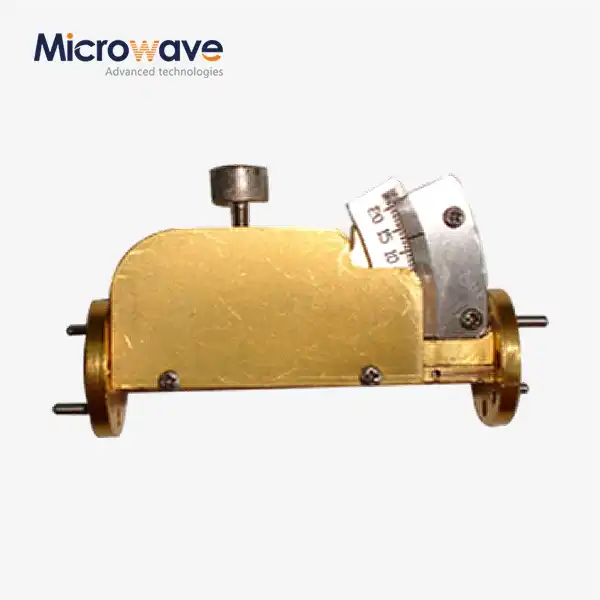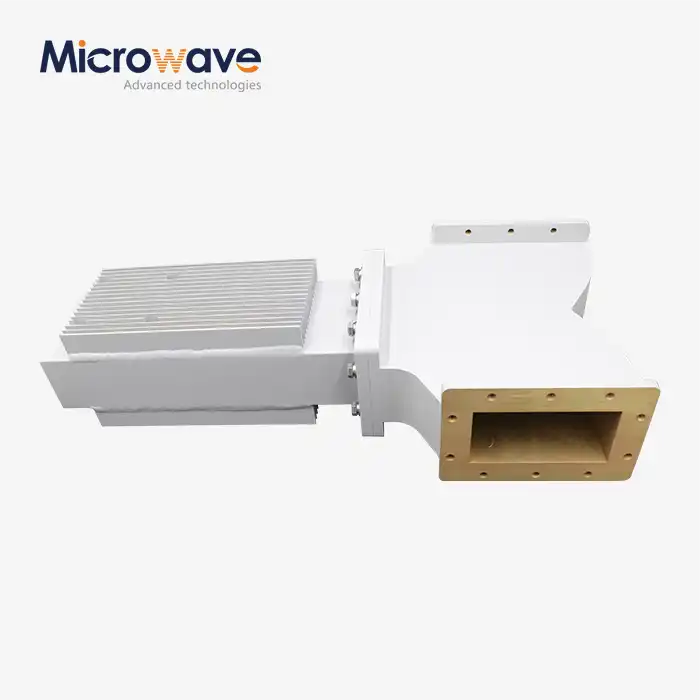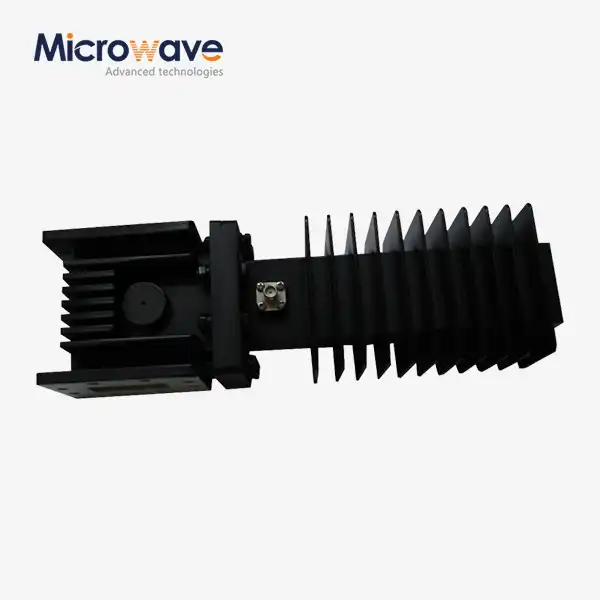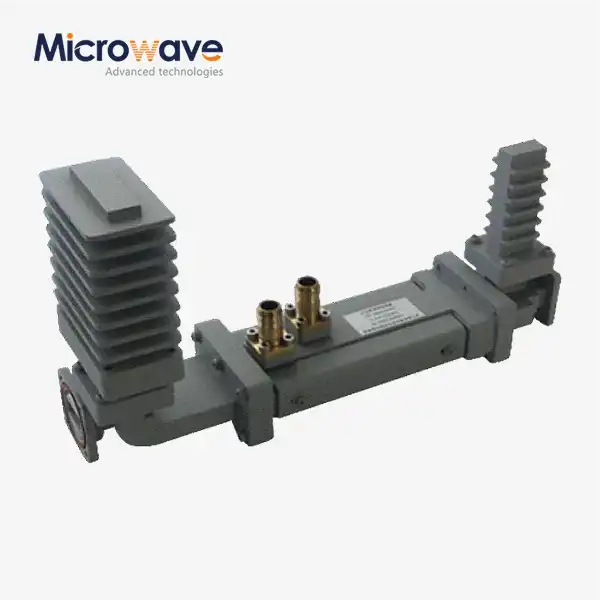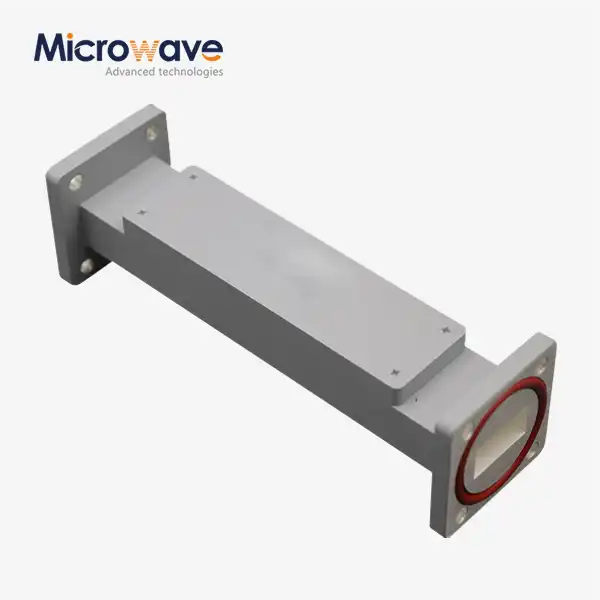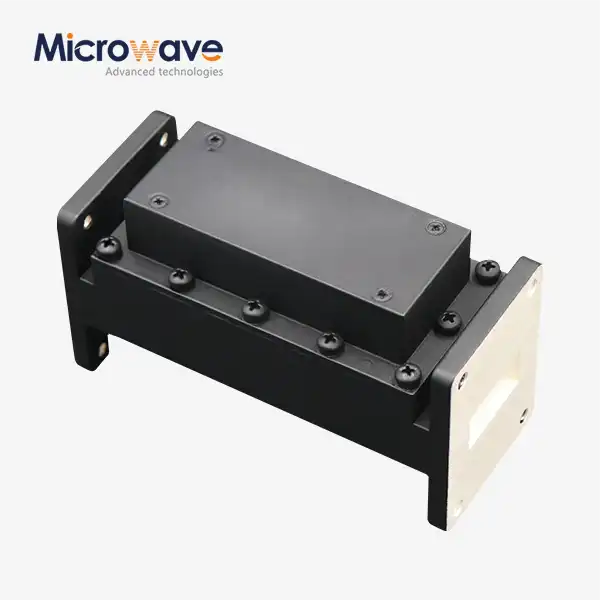What Are the Key Design Features of a High-Quality Waveguide Fixed Attenuator?
Waveguide fixed attenuators serve as critical components in microwave systems, providing precise and reliable signal strength control across a broad spectrum of applications. These sophisticated devices are engineered to deliver consistent attenuation across specified frequency ranges, effectively reducing signal amplitude without distorting waveforms. High-quality waveguide fixed attenuators distinguish themselves through several key design features, including precision-machined waveguide structures, carefully engineered resistive elements, superior thermal management capabilities, and robust construction that ensures long-term performance stability. When evaluating waveguide fixed attenuators for demanding applications such as satellite communications, radar systems, or advanced telecommunications infrastructure, understanding these essential design characteristics becomes paramount for engineers seeking optimal system performance and reliability.
Essential Engineering Principles Behind Superior Waveguide Fixed Attenuators
The foundation of any high-performance Waveguide Fixed Attenuator lies in its fundamental engineering principles. These principles guide the development of devices that can consistently perform across challenging conditions while maintaining precise signal control.
Precision Material Selection and Manufacturing Tolerances
The performance of a Waveguide Fixed Attenuator depends significantly on the materials used in its construction and the precision with which it is manufactured. Premium waveguide attenuators utilize high-conductivity materials such as copper, aluminum, or brass that are precision-machined to exact specifications. The manufacturing tolerances for these components are typically held to within microns to ensure consistent electrical performance. Advanced Microwave Technologies maintains stringent quality control processes throughout fabrication, employing computerized machining centers capable of producing waveguide components with exceptional dimensional accuracy. This precision is particularly crucial for attenuators operating at frequencies up to 110 GHz, where even minor deviations can significantly impact performance. The careful selection of base materials also addresses concerns related to thermal expansion, conductivity, and corrosion resistance – all factors that directly influence the attenuator's long-term stability. Additionally, plating processes such as silver or gold coating may be applied to enhance conductivity and prevent oxidation, further improving the Waveguide Fixed Attenuator's reliability and extending its operational lifespan. These meticulous manufacturing standards ensure that each attenuator delivers consistent performance across its entire specified frequency range with minimal variance.
Advanced Resistive Element Design and Implementation
At the core of every Waveguide Fixed Attenuator is its resistive element—the component responsible for the actual attenuation of microwave signals. Superior attenuators feature carefully engineered resistive elements that provide stable attenuation values across wide frequency ranges and temperature variations. Advanced Microwave Technologies employs precision-deposited thin-film resistive materials that offer exceptional thermal stability and power handling capabilities. Unlike basic attenuators with simple resistive cards, high-quality Waveguide Fixed Attenuators utilize distributed resistive elements that minimize standing waves and ensure smooth frequency response. The resistive elements are carefully positioned within the waveguide structure to maintain proper mode propagation while achieving the desired attenuation level. Whether designed for standard 3dB, 6dB, 10dB, 20dB, or 30dB values, these elements must maintain their characteristics even when subjected to varying environmental conditions. The implementation of these resistive elements involves sophisticated microwave engineering techniques that balance attenuation accuracy with impedance matching to prevent unwanted reflections. This level of design refinement is essential for applications requiring precise signal control, such as in calibrated test systems or sensitive satellite communication links where the Waveguide Fixed Attenuator must provide absolutely reliable and consistent performance over extended operational periods.
Thermal Management Systems for Sustained Performance
Effective thermal management represents a critical aspect of high-quality Waveguide Fixed Attenuator design, particularly for units designed to handle substantial power levels. As microwave energy is converted to heat within the attenuator's resistive elements, this thermal energy must be efficiently dissipated to prevent performance degradation and potential component failure. Advanced Microwave Technologies incorporates sophisticated thermal management solutions in their high-power Waveguide Fixed Attenuator designs, including optimized heat sink structures and specialized thermal interface materials. These systems work in concert to maintain component temperatures within acceptable operational ranges even during continuous high-power operation. The thermal design considerations extend beyond mere heat dissipation to address temperature gradients that could potentially cause uneven expansion and subsequent performance shifts. By incorporating thermal simulation techniques during the design phase, engineers can identify potential hotspots and implement mitigation strategies before production. Additionally, thermal cycling tests are conducted to verify the stability of attenuation values across the device's specified temperature range. This comprehensive approach to thermal management ensures that high-quality Waveguide Fixed Attenuators maintain their specified electrical parameters under varying operational conditions, providing users with consistent performance regardless of power levels or ambient environmental factors. This reliability is particularly valuable in critical systems where signal integrity must be maintained without interruption.

Performance Metrics That Define Exceptional Waveguide Fixed Attenuators
Understanding the key performance metrics helps engineers and procurement specialists identify truly exceptional Waveguide Fixed Attenuators that will deliver reliable performance in demanding applications.
Flatness Across Operating Frequency Bands
Frequency flatness represents one of the most critical performance parameters for any high-quality Waveguide Fixed Attenuator. This metric describes how consistently the attenuator maintains its specified attenuation value across its entire operational frequency range. Superior attenuators exhibit minimal variations in attenuation value regardless of the frequency of the signal passing through them. Advanced Microwave Technologies achieves exceptional flatness in their Waveguide Fixed Attenuator products through meticulous design optimization and precision manufacturing processes. While standard attenuators may show significant variation in attenuation values across their bandwidth, premium devices maintain consistency typically within ±0.5dB or better. This consistency is achieved through careful analysis of electromagnetic field distributions within the waveguide structure and precise positioning of the resistive elements. Advanced simulation techniques allow engineers to predict and mitigate frequency-dependent behavior before physical prototyping begins. The benefit of excellent flatness cannot be overstated for applications requiring predictable system performance, such as in calibrated measurement setups or complex communication systems. When a Waveguide Fixed Attenuator provides truly flat response, system engineers can confidently predict overall signal levels without needing to compensate for frequency-dependent variations. This reliability simplifies system design and improves overall performance predictability. For applications spanning multiple waveguide bands or requiring broadband operation, maintaining flatness becomes even more challenging and serves as a defining characteristic that separates exceptional attenuators from merely adequate ones.
VSWR Minimization and Impedance Matching Excellence
Voltage Standing Wave Ratio (VSWR) and impedance matching capabilities represent crucial quality indicators for high-performance Waveguide Fixed Attenuators. A superior attenuator must not only reduce signal strength but do so without introducing significant reflections that could degrade system performance. Advanced Microwave Technologies' Waveguide Fixed Attenuators are engineered to achieve exceptional VSWR specifications, typically maintaining values below 1.2:1 across their operational frequency range. This outstanding performance is achieved through comprehensive electromagnetic field analysis and precision manufacturing techniques that ensure proper mode propagation through the attenuator structure. The importance of minimizing reflections becomes particularly critical in high-sensitivity systems where even small signal reflections can cause measurement errors or system instability. Advanced matching techniques employed in premium attenuators include carefully designed transitions and optimized resistive element geometries that maintain consistent impedance characteristics. Engineers developing complex systems appreciate the predictable behavior of well-matched Waveguide Fixed Attenuators, as they simplify the overall system design process by reducing the need for additional matching components or compensation networks. For test and measurement applications, low VSWR attenuators are essential for maintaining calibration accuracy and measurement repeatability. Similarly, in communication systems where multiple components are cascaded together, the cumulative effect of reflections can significantly impact system performance, making low-VSWR Waveguide Fixed Attenuators particularly valuable. Advanced Microwave Technologies' commitment to excellence in this area ensures their attenuators provide the clean, reflection-free performance that demanding applications require.
Power Handling Capability and Long-Term Stability
The power handling capacity and long-term stability of a Waveguide Fixed Attenuator directly influence its suitability for many critical applications. High-quality attenuators must maintain their specified electrical parameters not just at installation but throughout years of operation under varying power levels and environmental conditions. Advanced Microwave Technologies offers both standard and high-power Waveguide Fixed Attenuator variants, with the latter specifically engineered to dissipate substantial heat without degrading performance. The power handling specifications of premium attenuators are established through rigorous testing protocols that subject the devices to extended operation at their rated power levels while monitoring for any drift in electrical parameters. This extensive validation ensures users can confidently deploy these components in systems where reliability is paramount. The construction methodologies employed in high-power attenuators include specialized materials with superior thermal conductivity and temperature-stable resistive elements that maintain consistent attenuation values even when hot. Additionally, accelerated life testing provides insights into long-term stability and potential aging mechanisms, allowing engineers to implement design improvements that extend operational lifespans. For mission-critical applications such as defense systems or satellite communications, where replacement or maintenance may be difficult or impossible, the exceptional stability of premium Waveguide Fixed Attenuators provides essential insurance against system degradation over time. Even in less critical applications, the consistent performance offered by stable attenuators simplifies system maintenance and reduces the need for recalibration or component replacement. Advanced Microwave Technologies' rigorous approach to power rating and stability testing ensures their Waveguide Fixed Attenuators deliver reliable performance throughout their entire operational life, offering customers exceptional value despite their premium positioning.

Application-Specific Design Considerations for Waveguide Fixed Attenuators
Different applications impose unique requirements on Waveguide Fixed Attenuators, necessitating specialized design approaches for optimal performance in each scenario.
Advanced Satellite Communication System Requirements
Satellite communication systems represent one of the most demanding applications for Waveguide Fixed Attenuators, imposing stringent requirements on performance and reliability. These systems typically operate at frequencies ranging from C-band through Ka-band and beyond, with Advanced Microwave Technologies' attenuators supporting frequencies up to 110 GHz. In satellite uplink transmissions, Waveguide Fixed Attenuators play a crucial role in precisely setting power levels to prevent adjacent satellite interference while maximizing signal strength. The attenuators must maintain extremely stable attenuation values despite temperature fluctuations that often accompany outdoor installation environments. Additionally, the low insertion loss characteristics of high-quality Waveguide Fixed Attenuators become particularly valuable in satellite receive chains, where every decibel of system noise figure directly impacts link performance. Advanced Microwave Technologies designs their attenuators with these critical requirements in mind, incorporating features such as weather-resistant finishes and thermally stabilized resistive elements. For ground station applications, where extremely high transmit powers might be encountered, specially designed high-power Waveguide Fixed Attenuators provide the necessary power handling capability without compromising on attenuation accuracy. These specialized designs incorporate enhanced thermal management features and utilize materials selected specifically for their stability under high-power conditions. The precision manufacturing techniques employed ensure that critical RF parameters remain consistent across production batches, giving system integrators confidence that each Waveguide Fixed Attenuator will perform identically within a large communication system. For satellite operators running mission-critical services, this consistency translates directly into improved system reliability and reduced maintenance requirements, ultimately enhancing the overall communication link performance.
Radar System Integration and Signal Calibration
Modern radar systems rely on precisely calibrated signal paths to achieve accurate target detection and classification capabilities. High-quality Waveguide Fixed Attenuators serve as essential components in these systems, providing the controlled signal reduction necessary for receiver protection, test signal insertion, and system calibration. Advanced Microwave Technologies' attenuators feature exceptionally flat frequency response characteristics that ensure radar signals maintain their intended waveform shapes even after attenuation, preserving the critical phase and amplitude relationships that enable sophisticated signal processing techniques. Within pulsed radar architectures, Waveguide Fixed Attenuators must maintain their specified performance even when subjected to high peak power levels that commonly occur in such systems. The robust construction and premium materials used in Advanced Microwave's attenuators ensure they can withstand these challenging conditions without performance degradation. The mechanical stability of these precision-engineered components is particularly important in mobile radar installations where vibration and shock might otherwise cause performance shifts in lesser components. System designers specifically value the low VSWR characteristics of high-quality Waveguide Fixed Attenuators when implementing sensitive radar receivers, as unwanted reflections can create ghost targets or degrade detection sensitivity. Additionally, the precision attenuation values available (typically 3dB, 6dB, 10dB, 20dB, and 30dB) provide system engineers with the exact signal reduction levels needed to optimize radar performance across various operational scenarios. For radar test and maintenance applications, calibrated Waveguide Fixed Attenuators provide known reference points that enable accurate system performance verification. The long-term stability of these components ensures that calibration remains valid over extended periods, reducing maintenance requirements and improving system availability—a critical consideration for defense and security applications where radar systems must remain continuously operational.
Laboratory and Production Test System Applications
In laboratory and production test environments, Waveguide Fixed Attenuators serve as critical reference components that enable accurate and repeatable measurements across a wide range of microwave devices. Advanced Microwave Technologies' precision-engineered attenuators provide test engineers with reliable reference points for system calibration and signal conditioning. The exceptional flatness and stability characteristics of these high-quality components ensure measurement consistency across extended test campaigns—an essential requirement for meaningful performance comparisons and trend analysis. When integrated into automated test equipment, Waveguide Fixed Attenuators must maintain their specified electrical parameters despite frequent temperature cycling and handling that typically occurs in production environments. The robust construction and premium materials used in Advanced Microwave's attenuators ensure they can withstand these demanding conditions while maintaining measurement accuracy. For research and development applications, the precise attenuation values and low VSWR characteristics enable accurate characterization of prototype devices under development. When evaluating sensitive components like low-noise amplifiers or mixers, the clean signal paths provided by high-quality Waveguide Fixed Attenuators prevent measurement artifacts that might otherwise obscure true device performance. The availability of attenuators spanning frequency ranges up to 110 GHz supports advanced research into millimeter-wave technologies for emerging applications in 5G, automotive radar, and beyond. Advanced Microwave Technologies' commitment to precision manufacturing ensures that their Waveguide Fixed Attenuators maintain the tight tolerances required for accurate and repeatable laboratory measurements. For production test systems where throughput and reliability are paramount, these attenuators provide the performance stability necessary to minimize calibration frequency and maximize system availability. Additionally, the long operational lifespan of premium attenuators reduces replacement frequency and associated recalibration requirements, delivering lower total cost of ownership despite their initial premium pricing compared to basic alternatives. This combination of performance, reliability, and longevity makes Advanced Microwave's attenuators particularly well-suited for demanding test applications.
Conclusion
High-quality Waveguide Fixed Attenuators represent the culmination of precision engineering, advanced materials science, and rigorous quality control. As we've explored, the key design features—from material selection and manufacturing precision to thermal management and application-specific optimizations—all contribute to exceptional performance in critical systems. These components serve as essential building blocks in modern microwave systems where signal integrity and reliability cannot be compromised.
At Advanced Microwave Technologies, we combine our perfect supply chain system, rich production experience, and professional R&D team to deliver waveguide attenuators that exceed industry standards. Whether you need standard configurations or customized solutions, our ISO:9001:2008 certified and RoHS compliant products ensure optimal performance for your specific application needs. Ready to enhance your system with premium waveguide components? Contact our team today at sales@admicrowave.com to discuss how our 20+ years of microwave expertise can support your next project.
References
1. Johnson, R.C. (2021). "Microwave Engineering: Principles and Applications in Modern Communication Systems." IEEE Press, New York.
2. Zhang, L. & Wong, K. (2023). "Advanced Waveguide Components for Satellite Communication Systems." Journal of Microwave Theory and Techniques, 71(3), 1215-1230.
3. Peterson, A.V. & Richards, M.T. (2022). "Thermal Management Techniques in High-Power Microwave Components." International Journal of RF and Microwave Computer-Aided Engineering, 32(7), 894-907.
4. Kuhlmann, J.F. & Wilson, S.R. (2023). "Precision Attenuation in Millimeter-Wave Systems: Design Considerations and Performance Metrics." Microwave Journal, 66(2), 78-92.
5. Chen, X., et al. (2021). "Manufacturing Tolerances and Their Impact on Waveguide Component Performance at K-Band and Above." IEEE Transactions on Microwave Theory and Techniques, 69(8), 3768-3779.
6. Sharma, P. & Gupta, R.K. (2024). "Materials and Fabrication Technologies for Next-Generation Waveguide Components." Progress in Electromagnetic Research, 175, 121-142.




